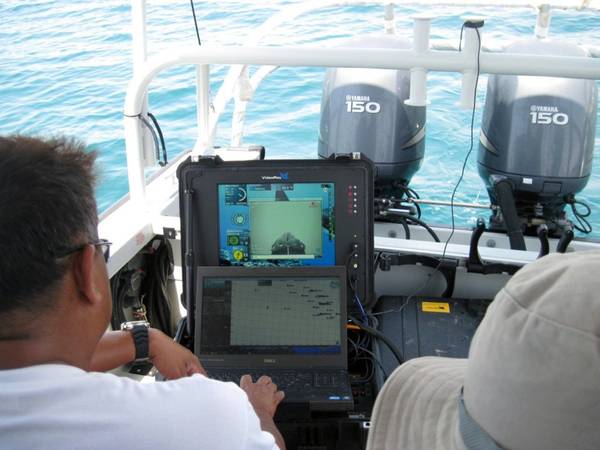
Submerged Recovery & Inspection Services help King Fahd University of Petroleum & Minerals gather marine data used near proposed oil dril sites.
The company used a VideoRay Pro4 ROV to complete more than 200 kilometers (or, approximately 124 miles) of bathymetry and biotope survey transects in the Red Sea to gain a baseline assessment to see if there were any critical habitats area's in or near several proposed oil well drill sights.
The expedition had a very tight time schedule, conducted in a remote part of the Kingdom of Saudi Arabia and consequently there was little or no support during the expedition. After considering all of their options and systems available to them, KFUPM decided to use a VideoRay Pro4 ROV with a KCF Technologies Smart Tether, a fully integrated LYYN video enhancement system, a YSI 600XL Sonde Gauge and a BlueView Technologies P900-90 Sonar.
The survey team had about 100 transects covering more than 223 kilometers (or, approximately 139 miles) that they surveyed to document the bottom conditions. The team entered the coordinates into the Smart Tether software and then flew the ROV in a straight line from point to point. Whatever the bottom topography was the team would use the Smart Tether software to mark the position accordingly.
The team made more than 5,000 markers during the expedition and took all of those data points and plotted them out on a chart showing what the bottom conditions were.
Because the team was able to mark targets (bottom conditions) at depths up to 100 meters deep, they did not have to use divers. The overall data allowed them to say that there were no critical habitats in the proposed well drilling areas.
The survey team, led by Craig Thorngren, USCG (ret) of Submerged Recovery completed the survey in 18 days operating out of a small 25 foot open vessel with no operational failures. They were able to mark and record more 2000 targets of corral, grass, rubble and other assorted bottom features.
Thorngren commented on the expedition's conditions, "This was one of the most difficult and most demanding jobs this gear will ever see. The day time temperatures were between 120 degrees and 130 degrees while the water temperature was routinely above 100 degrees. That coupled with the blowing, hot sand really pushed this gear to some extreme environmental conditions and it worked perfectly each and every time."



